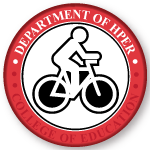Author ORCID Identifier
Document Type
Article
Publication Date
5-30-2018
Publication Title
European Journal of Applied Physiology
Volume
118
First Page
1653
Last Page
1660
Abstract
Introduction
Exercise training is recommended for improving health and protecting against the development of metabolic and cardiovascular pathologies. Combined resistance and aerobic exercise training (CRAE) has been shown to provide unique benefits in older adults with cardiovascular diseases.
Purpose
We sought to determine the beneficial effects of CRAE in adolescent girls who are obese and hyperinsulinemic.
Methods
Forty adolescent girls who are obese (age 14.7 ± 1 years; BMI 30 ± 2) were randomly assigned to a “no exercise” (CON n = 20) or combined exercise group (EX n = 20). The EX group performed resistance and aerobic exercise for 12 weeks, 5 times per week. Exercise intensity was increased gradually, from 40 to 70% of heart rate reserve (HRR), every 4 weeks. The brachial-ankle pulse wave velocity (BaPWV), blood pressure (BP), heart rate (HR), blood leptin, adiponectin levels, and body composition were measured before and after the 12-week intervention.
Results
We observed that CRAE effectively reduced the body fat percentage, body weight, and waist circumference in the EX group (p < 0.05). After 12 weeks of training, subjects in the CRAE group maintained appropriate leptin and adiponectin levels and showed positive improvements of blood insulin, glucose, and insulin resistance parameters relative to baseline and to the CON group (p < 0.05).
Conclusion
CRAE is a useful therapeutic method to alleviate metabolic risk factors in adolescent girls who are obese and hyperinsulinemic.
Recommended Citation
Bharath, L.P., Choi, W.W., Cho, Jm. et al. Combined resistance and aerobic exercise training reduces insulin resistance and central adiposity in adolescent girls who are obese: randomized clinical trial. Eur J Appl Physiol 118, 1653–1660 (2018). https://doi.org/10.1007/s00421-018-3898-8


Comments
This version of the article has been accepted for publication, after peer review (when applicable) and is subject to Springer Nature’s AM terms of use, but is not the Version of Record and does not reflect post-acceptance improvements, or any corrections. The Version of Record is available online at: https://doi.org/10.1007/s00421-018-3898-8
Publisher holds a Bespoken License